Euclid's first images show a detailed view of the universe
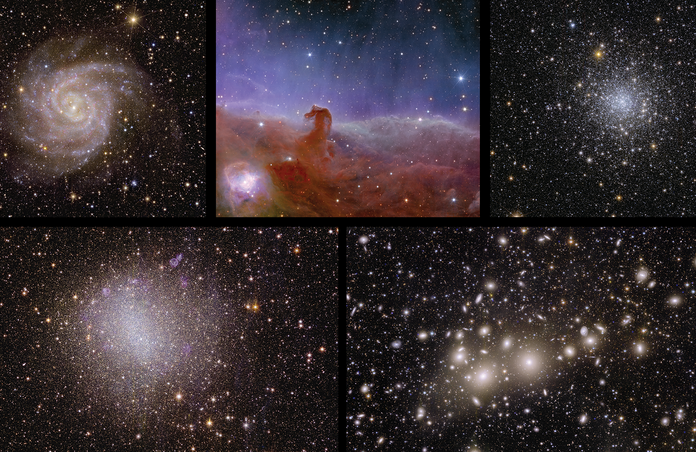
The first full colour images from ESA’s Euclid space mission were recently revealed on Tuesday (7/11), demonstrating the space telescopes full potential to view the cosmos. The five astronomical images unveil an extremely high-resolution perspective of the distant universe, showing that Euclid is more than capable of creating the largest 3D map of the universe ever seen.
Euclid’s main aim is to investigate how dark matter and dark energy have moulded the universe to what we see today. As mentioned in a previous article discussing the early commissioning test images, the telescope is equipped with two instruments: VIS, a visible light camera, and NISP, which images in the infrared. To better understand the influence such mysterious constituents have on the visible universe, Euclid plans to observe the shapes, motions and distances of billions of galaxies covering 36% of the night sky, spanning as far as 10 billion light years away for the next 6 years. From these observations, the largest 3D cosmic map ever made can be constructed.
But what makes Euclid so special? The dark universe investigator telescope can take very sharp visible and infrared images of a very large part of the sky in just one sitting, in as little as an hour of observing. The five dazzling images demonstrate just that, displaying the various cosmic objects in their entirety with extreme detail.
“Dark matter pulls galaxies together and causes them to spin more rapidly than visible matter alone can account for; dark energy is driving the accelerated expansion of the Universe. Euclid will for the first-time allow cosmologists to study these competing dark mysteries together,” explains ESA Director of Science, Professor Carole Mundell. “Euclid will make a leap in our understanding of the cosmos as a whole, and these exquisite Euclid images show that the mission is ready to help answer one of the greatest mysteries of modern physics.”
Professor Mark Cropper, Mullard Space Science Laboratory at UCL, who has led on designing and developing the VIS optical camera over 16 years, working with teams at UCL, Open University and across Europe, said: “The quality of these very beautiful images shows that Euclid is poised to carry out its mission to study dark matter and dark energy and will enable a wide range of other science across the whole of astronomy.
The Perseus galaxy cluster
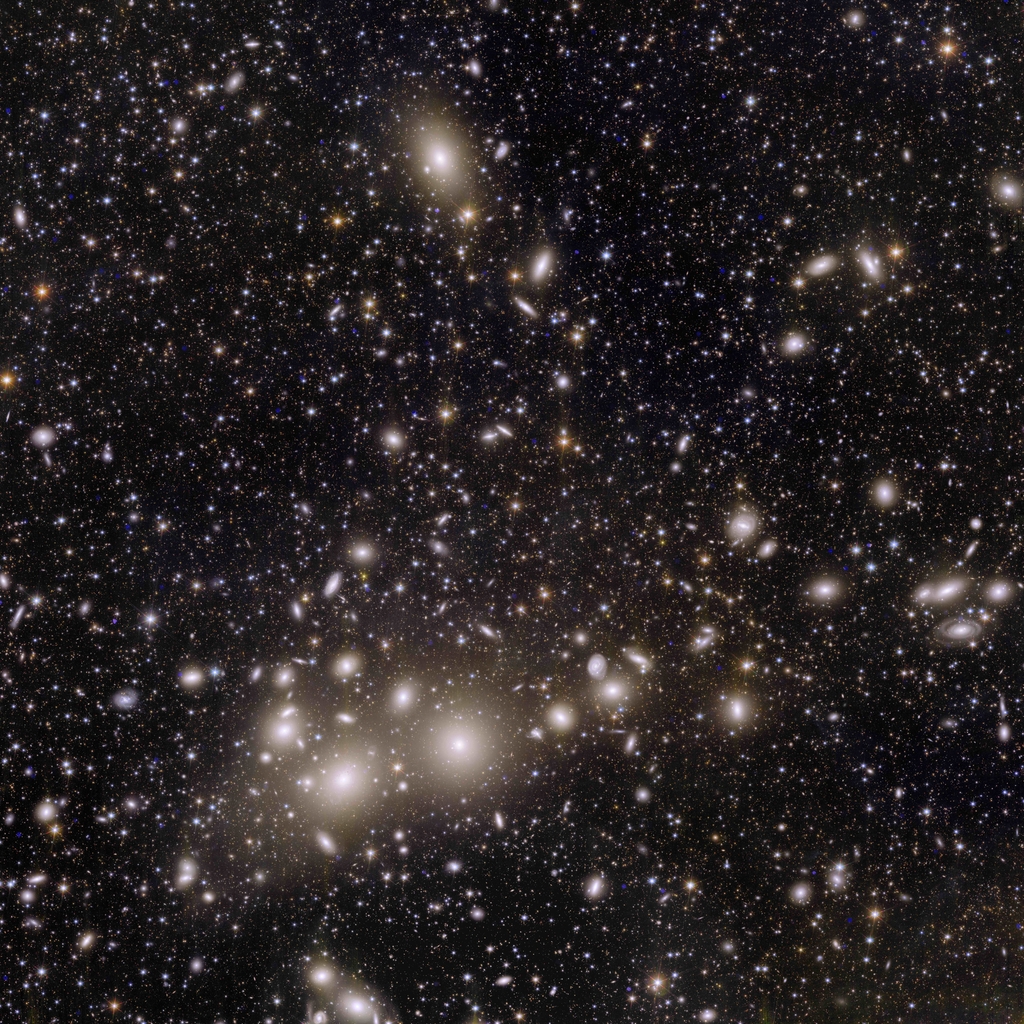
This revolutionary image displays 1000 galaxies that are part of the Perseus cluster, as well as 100,000 galaxies further away in the background. Most of these faint background galaxies were previously unseen, some being as far as 10 billion light years away. Perseus is one of the most massive known structures in the universe, located 240 million light years away, and this is the first time that such a sizeable image has captured so many Perseus galaxies in such high detail.
This cosmic object is an important object to study, since it has been demonstrated that galaxy clusters like Perseus can only have formed if dark matter is present. “If no dark matter existed, galaxies would be distributed evenly throughout the Universe,” explains Euclid Consortium scientist Jean-Charles Cuillandre of the CEA Paris-Saclay in France. Due to gravity, dark matter forms filamentary structures called the cosmic web. Crossing points between these filaments result in galaxies sticking together closely, ultimately forming a cluster. Cosmologists can map the distribution and shape of such galaxies, revealing clues about how dark matter has shaped the present universe. Euclid will hope to observe many similar galaxy clusters during the next 6 years, uncovering more about the dark glue which holds them together.
Spiral galaxy IC 342

Nicknamed ‘the hidden galaxy’, IC 342 is difficult to observe due to its location. It lies behind the milky way disc, and is therefore obscured by gas, dust and stars. However, thanks to Euclid’s near infrared instrument, we can peer through the dust to see a myriad of cool, low mass stars which dominate such galaxies. IC 342 is a spiral galaxy much like our own milky way, therefore by studying such a galaxy, scientists can learn more about ours. Although this difficult galaxy has been observed before, it has been impossible to study the star formation history of the galaxy in its entirety until now. Euclid has also uncovered many globular clusters which haven’t been previously identified.
Irregular galaxy NGC 6822
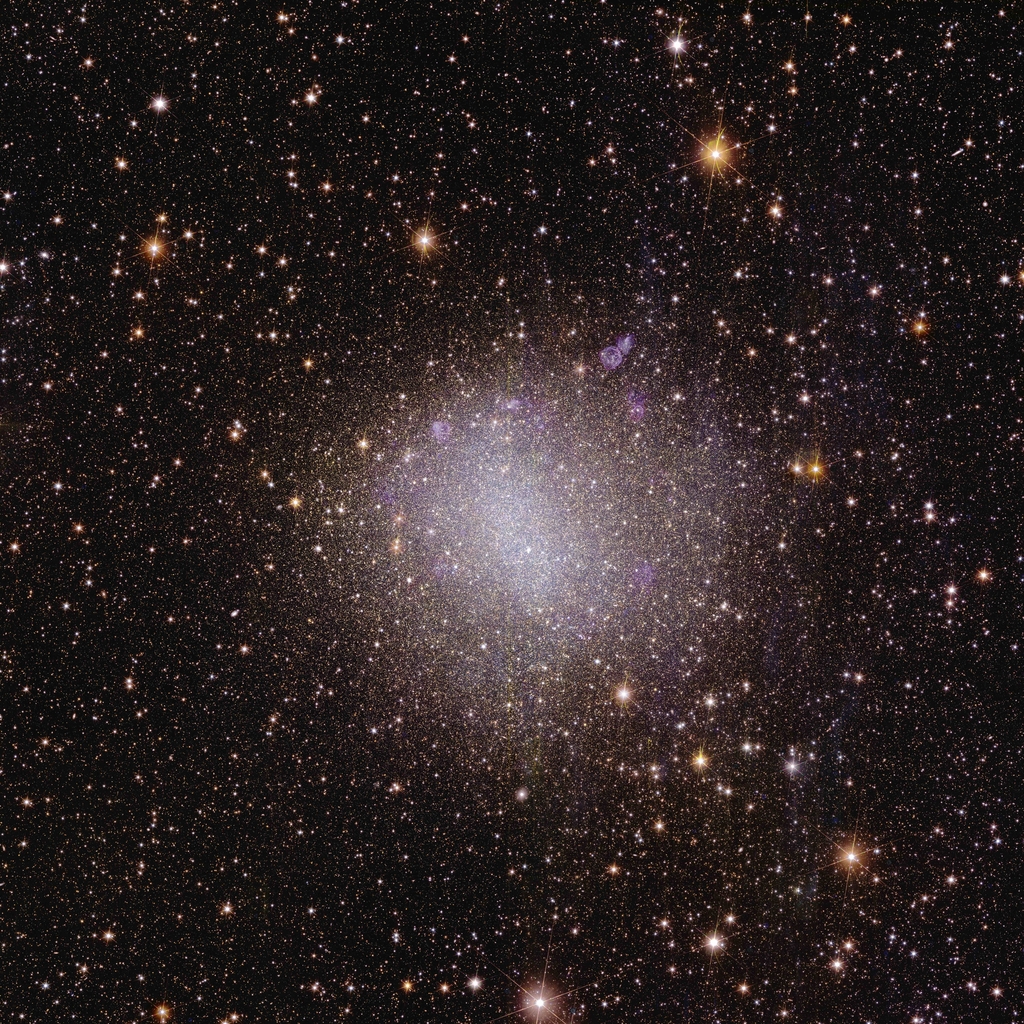
Located nearby at 1.6 million light years, the irregular dwarf galaxy NGC 6822 looks quite different to a typical spiral galaxy. This type of galaxy are building blocks for larger ones such as the Milky Way, so can provide important insight. Euclid demonstrates its ability to image such large parts of the sky by being the first to capture the entire galaxy and its surroundings in just one hour at such high resolution, a feat not possible for the likes of ground-based telescopes or JWST. The galactic blob contains metal poor stars, and by studying such stars astronomers can better understand the evolution of galaxies in the early universe. Additionally, several globular clusters can be seen in the image. Since these clusters are some of the oldest objects in the universe and most of their stars were formed from the same cloud, they provide information on the formation of the galaxy.
Globular cluster NGC 6397
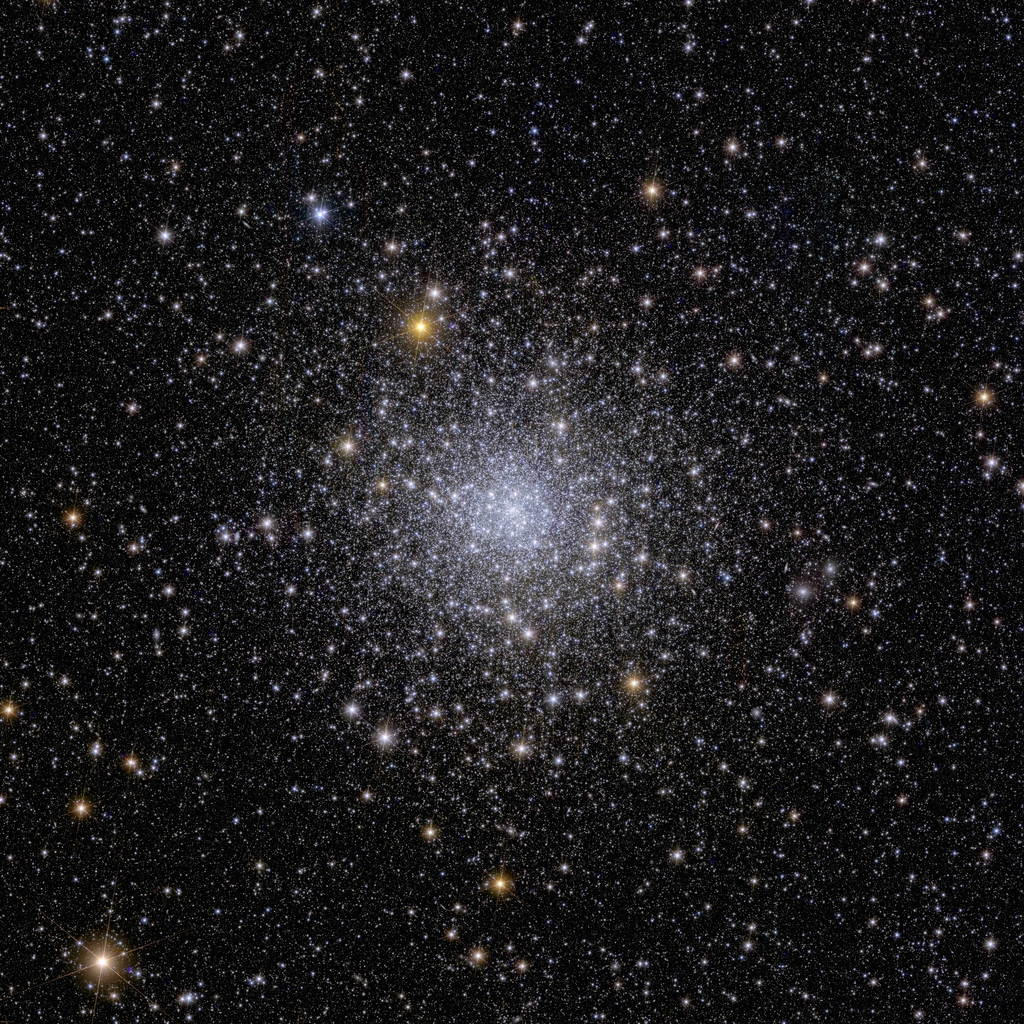
This cluster is the second closest to Earth, located at 7800 light years away from us. Such globular clusters are the collection of hundreds of thousands of stars all held together by gravity and are some of the oldest objects in the universe. It is a common challenge to distinguish the individual stars within a cluster, due to the volume of stars which means the brightest ones outshine the fainter. However, Euclid has broken this challenge by observing the entire cluster in a single observation, simultaneously recognising many stars within it. Moving forward, Euclid will be used to search for tidal tails in these globular clusters. Such tails are a trail of stars spanning far beyond the cluster due to a previous interaction with a galaxy. If such trails are found for NGC 6397 as well as other globular clusters, precise calculations on how the clusters orbit our galaxy can be made.
The Horsehead nebula
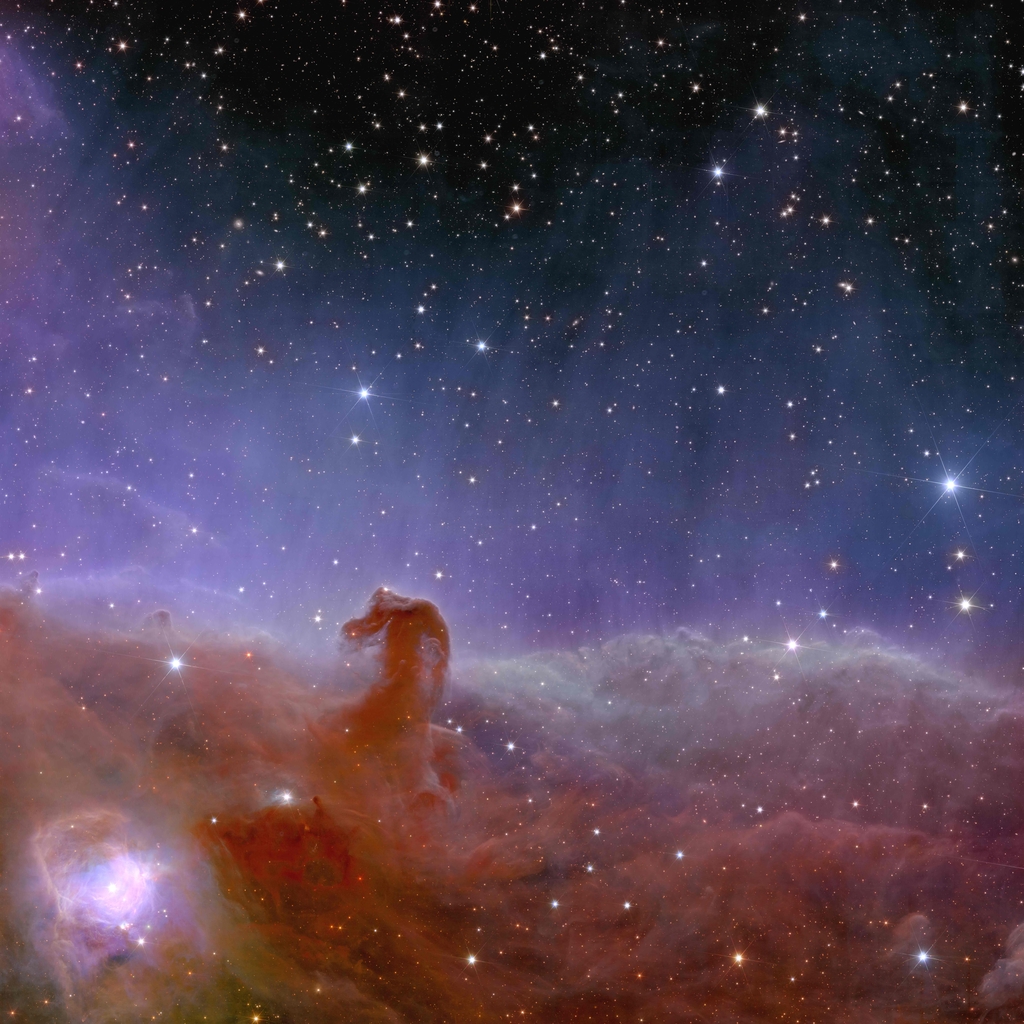
The magnificent horse shaped cloud is the closest star forming region to Earth, part of the Orion molecular cloud. “We are particularly interested in this region, because star formation is taking place in very special conditions,” explains Eduardo Martin Guerrero de Escalante of the Instituto de Astrofisica de Canarias in Tenerife and a legacy scientist for Euclid. Such special conditions are the consequence of radiation coming from a very bright star located above the horsehead, named Sigma Orionis. The stellar UV radiation causes the clouds to glow, meanwhile the thick clouds of the horsehead block light, making it appear dark. Therefore, astronomers can study the differences in star formation between the light and dark clouds.
This is only the beginning for Euclid, and there’s much more to come. “In the coming months, scientists in the Euclid Consortium will analyse these images and publish a series of scientific papers in the journal Astronomy & Astrophysics, together with papers about the scientific objectives of the Euclid mission and the instrument performance,” adds Yannick Mellier, Euclid Consortium lead.
